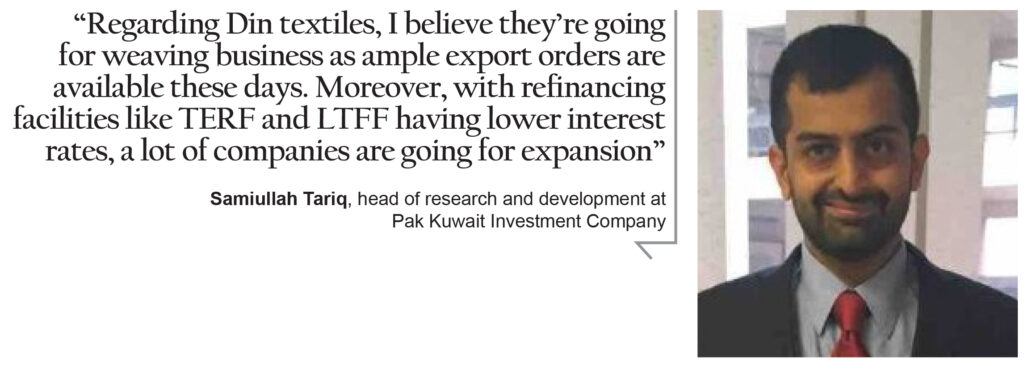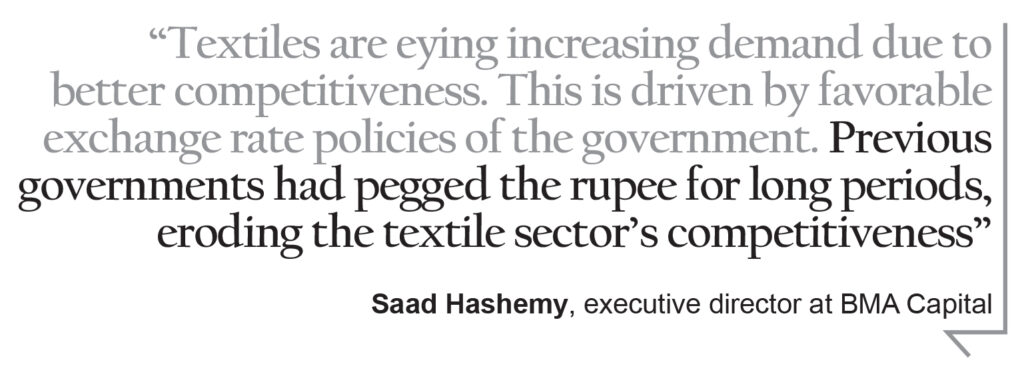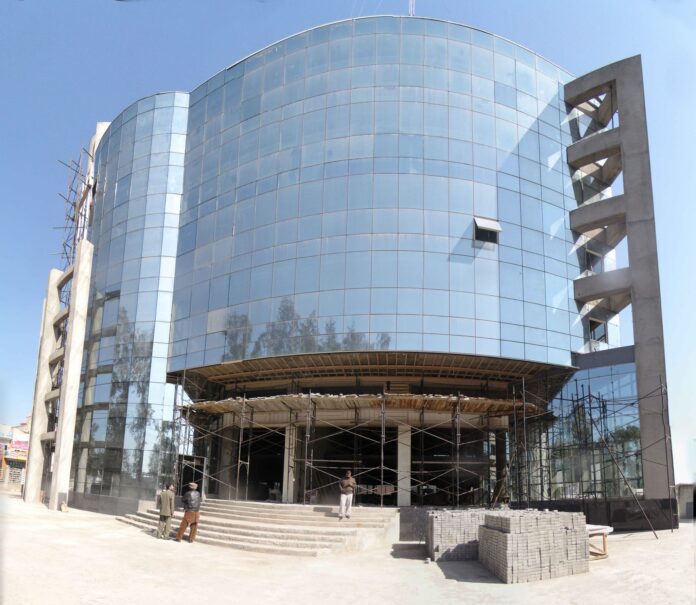Other businessmen are wringing their hands over the impact that Covid-19 may have on their businesses. Not Shaikh Mohammad (S.M.) Muneer. This is not even remotely the first crisis the chairman of Din Textile Mills has faced.
In fact, the first major crisis he faced had nothing to do with textile. The Din Group, as it were, started in 1954, under his father, the late Shaikh Mohammad Din. It was a small leather shop that very quickly turned into one of the largest exporters of raw leather. But in 1966, the company went bankrupt, and the family had to sell personal assets like cars and property to survive. As S.M. Muneer put it in an old Dawn article, he considered taking a job at PIA. His father talked him out of it, a decision that would prove to be the right one (sorry, PIA).
S.M. Muneer rented a small leather tannery in Karachi, and rebuilt the company tannery by tannery, eventually setting up his own leather factory in 1970. In 1987, S.M. Muneer felt comfortable enough to take on a new risk, and set up his first spinning factory in Chunian, close to Lahore.
Today, Din Textile Mills has four spinning units, and one dyeing unit, located at Multan Road Pattoki and Raiwind. The consolidated annual production capacity of yarn is around 35.7 million kg, while the dyeing of fibre and yarn is around 4.38 million kg. The total number of spindles installed is 104,460. The mills employ 2,529 people, which is about half of the entire Din Group, which includes not just the mill company, but also Din Leather (yes, it still exists), and Din Farm Products.
In the year ending June 2019, the company’s total sales stood at Rs11.6 billion, compared to 2018’s Rs9.5 billion. Of that, roughly 80% was local sales, while the rest were exported. The company has done reasonably well: it has made a gross profit every single year for the last six years, while it made a profit before tax between 2016 and 2019. The company had a rough 2017, but 2019’s profit before tax of Rs419 million was the largest amount in six years.
However, the company was not immune to the pandemic. In the most recent financials, for the nine month period ending March 31, 2020, the company’s profit before tax stood at Rs237 million, which is a slight dip compared to the same period from 2019 (Rs264 million).
“The sudden outbreak of the pandemic interrupted the smooth flow of business worldwide, and it may have severe repercussions,” the director’s report worryingly noted.
But that was in March. And this is S.M. Muneer we are talking about. The Sitara-i-Imtiaz holder has had a great career so far: not only is he the chairman of Din Textiles, but back in the day he partnered up with Mian Mohammad Mansha to buy MCB Bank, of which he has been the vice-chairman since the 90s.

Which is why on September 23, Din Textiles informed the Pakistan Stock Exchange it would set up a weaving project, to start operating in January 2021. The total cost is expected to be Rs3 billion, while the production capacity is expected to be 13 million metres fabric.
Considering that Din Textiles has been doing well, for a textile company in Pakistan at least, it makes sense to try to move up the value chain ie. try to enter the industry of the market they sell into. For example, a textile spinning company that spins cotton yarn would move up the value chain by entering the weaving business, using that yarn to weave it into cloth.
But it is not just this one company that is making moves. The entire textile sector has been using this time to make interesting decisions. For instance, Ravi Textiles decided to move backwards, and buy a ginning mill. Then, just a few weeks ago, the Bibojee Group – owned by the descendents of Habibullah Khan Khattak, including retired Lt Gen Ali Kuli Khan Khattak – merged their two textile spinning companies as well: Janana de Malucho Textile Mills and Babri Cotton Mills. Similarly, the Tata Group merged their three companies – Island Textile Mills, Salfi Textile Mills, and Tata Energy – with their fourth company, Tata Textile Mills. The directors said that in the long run, it would lead to greater stability, cost reduction, increase of the surviving entities’ international and local competitiveness, and sustainable operations.
Why is it that in the middle of a global pandemic that has decimated countries and societies, including Pakistan, one sector has found time to experiment with options?

According to Samiullah Tariq, head of research and development at Pak Kuwait Investment Company, said, “Regarding Din textiles, I believe they’re going for weaving business as ample export orders are available these days. Moreover, with refinancing facilities like TERF and LTFF having lower interest rates, a lot of companies are going for expansion.”
It was a view echoed almost identically by Syed Fawad Basir, senior research analyst at Topline Securities, who said that orders had been building up due to Covid-19. Additionally, low interest rates meant that companies were now jumping on the chance to expand.
According to Saad Hashemy, executive director at BMA Capital, “Textiles are eying increasing demand due to better competitiveness. This is driven by favorable exchange rate policies of the government. Previous governments had pegged the rupee for long periods, eroding the textile sector’s competitiveness.”


























Seems a healthy sign and a sigh of relief. This should definitely reflect on people laid off during pandemic??